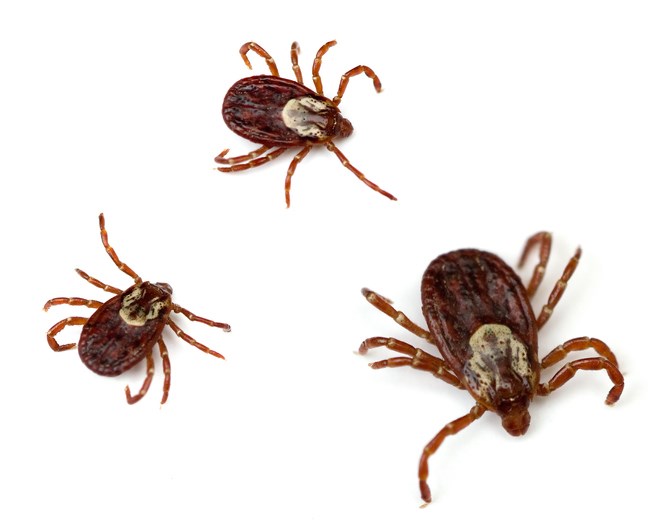As the weather warms, an annoying blood-sucking arachnid returns.
The provincial health ministry is warning residents to be vigilant and monitor for ticks on themselves and their pets.
“As more people are venturing outdoors, Saskatchewan residents need to watch for ticks,” said Dr. Julie Kryzanowski, Saskatchewan’s chief deputy medical health officer. “While the risk of exposure to Lyme disease remains low in the province, stay vigilant and take proper precautions to protect yourself and others.”
The province said most ticks found in Saskatchewan are the American dog tick. Active from mid-April to the end of July, they cannot Lyme disease to people.
Blacklegged ticks, which can cause Lyme disease, are rare in Saskatchewan, said the province. Introduced by migratory birds in early spring, blacklegged ticks mature into adults and remain active throughout fall, particularly in tall grass, brush, or wooded areas.
In 2020, the province said, 2,678 ticks were identified in Saskatchewan. Only 12 were blacklegged ticks. Of these, seven physical specimens were submitted for testing, and three tested positive for the bacteria that causes Lyme disease.
Those who want to receive timely identification of the type of tick that attached to a person, pet, or livestock animal and information on the risk of exposure to tick-borne diseases can submit photographs to eTick (etick.ca), an image-based tick identification platform that’s a collaboration between the provincial government and University of Saskatchewan researchers. It replaces the mail-in tick surveillance program.
The province will no longer accept unsolicited mail-in tick submissions, but the eTick administrators may request some ticks be submitted by mail for quality control purposes or if the tick species is one of medical concern.
To prevent tick bites:
- Wear pants, long-sleeved shirts, and shoes that do not expose your bare feet.
- Pull socks over your pant legs to prevent ticks from crawling up your legs.
- Wear light-coloured clothes so ticks can be seen easily.
- Use insect repellents that contain DEET or Icaridin. Apply repellent to clothes as well as your skin. Always read and follow the directions on the label. Some repellents may have age restrictions.
- In Canada, clothing that has been treated with the insecticide permethrin has been approved for use by people over the age of 16.
- Shower or bathe as soon as possible after being outside to wash off loose ticks and inspect for attached ticks.
- Do "full-body" tick checks after being outside on yourself, your children, and your pets.
If you find a tick attached to your skin or on your pet:
- Carefully remove it with fine-tipped tweezers and grasp the tick's mouthparts as close to the skin as possible.
- Pull slowly upward and out with firm, steady pressure.
- Be careful not to squeeze, crush or puncture the body after removal.
- Do not put Vaseline, gasoline, or other harmful substances on an attached tick.
- Submit photos of the tick using the eTick system, and please keep ticks in a secure container until you receive the identification results. Ticks can be euthanized by placing them in a bag and storing it in the freezer for 24 hours.



